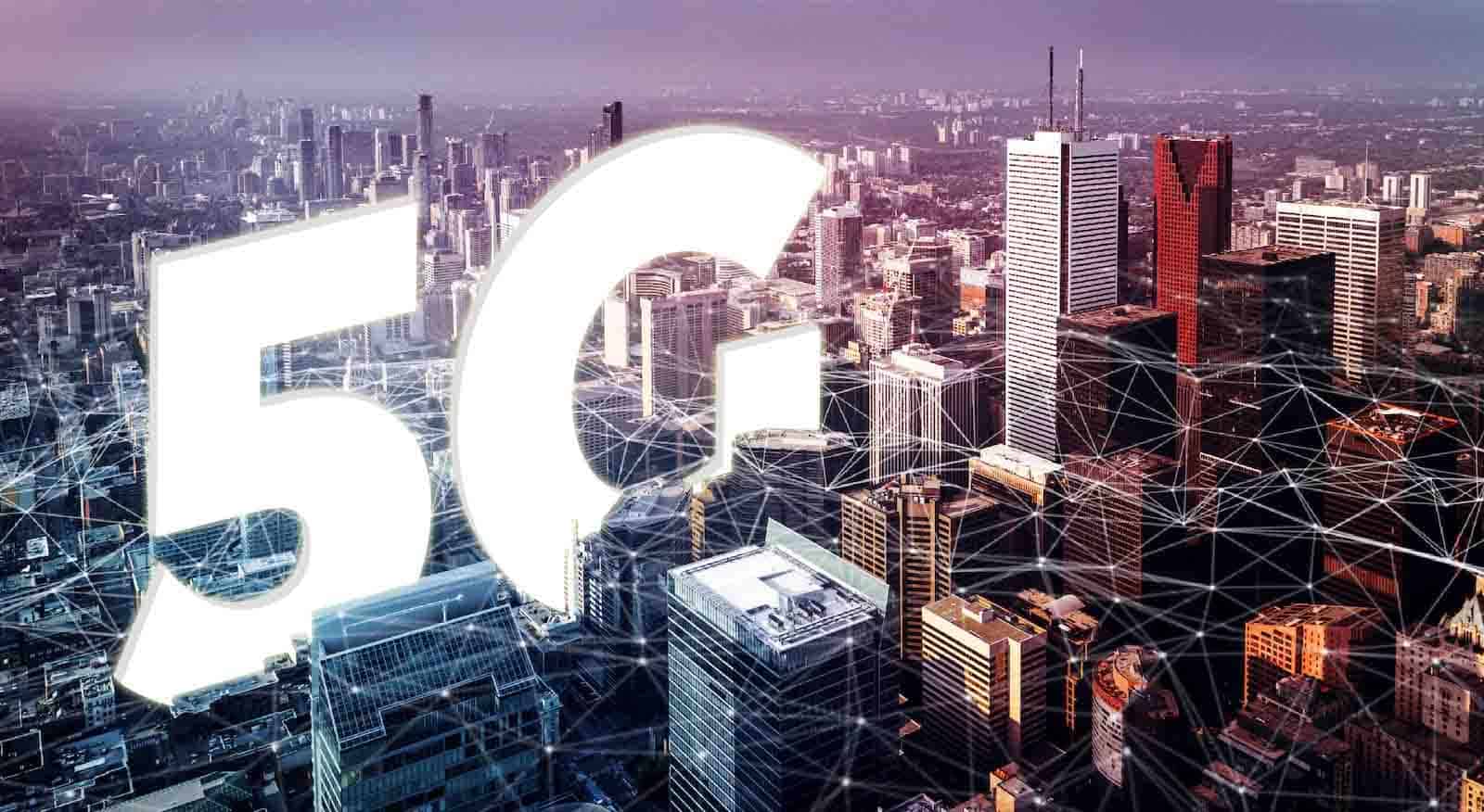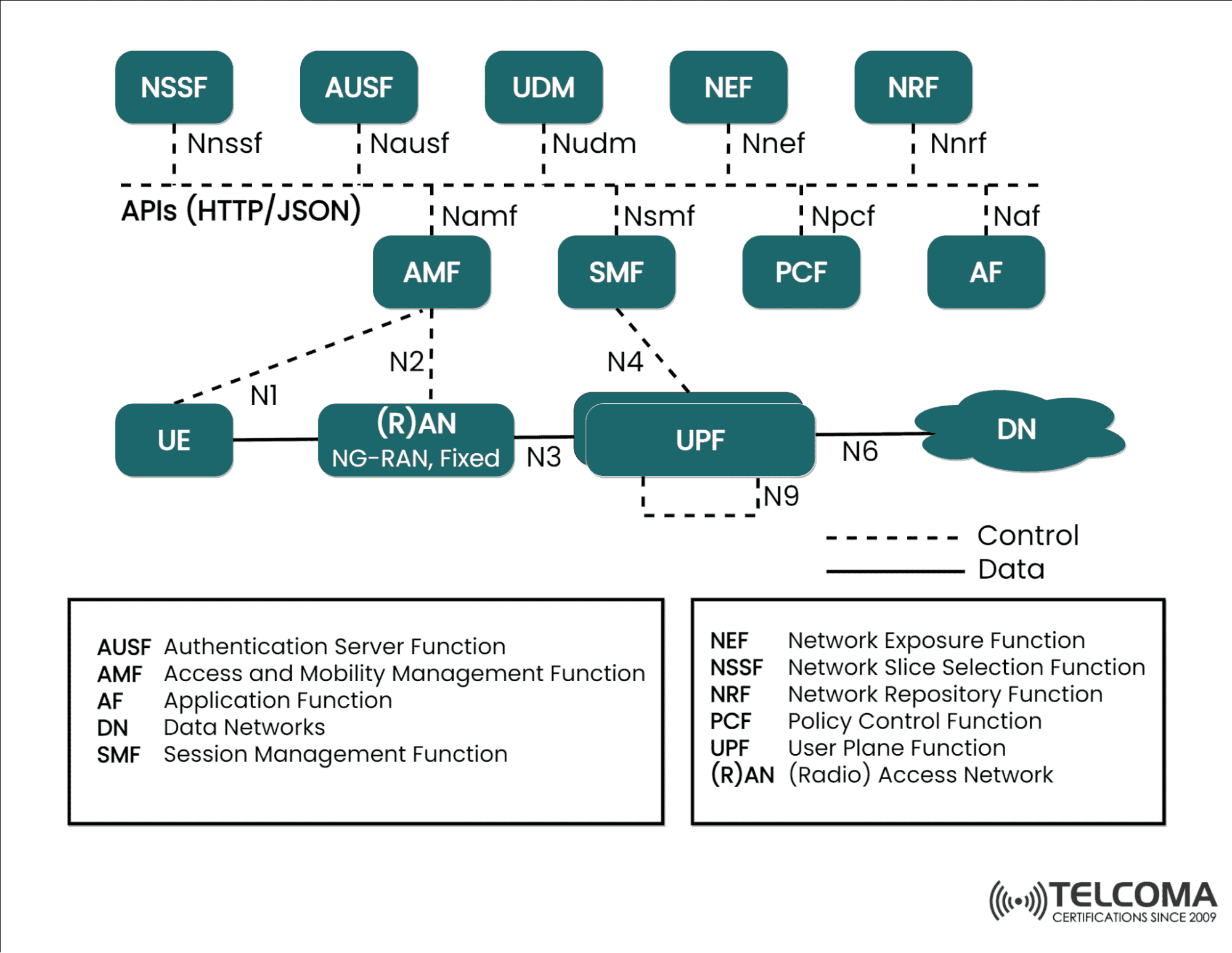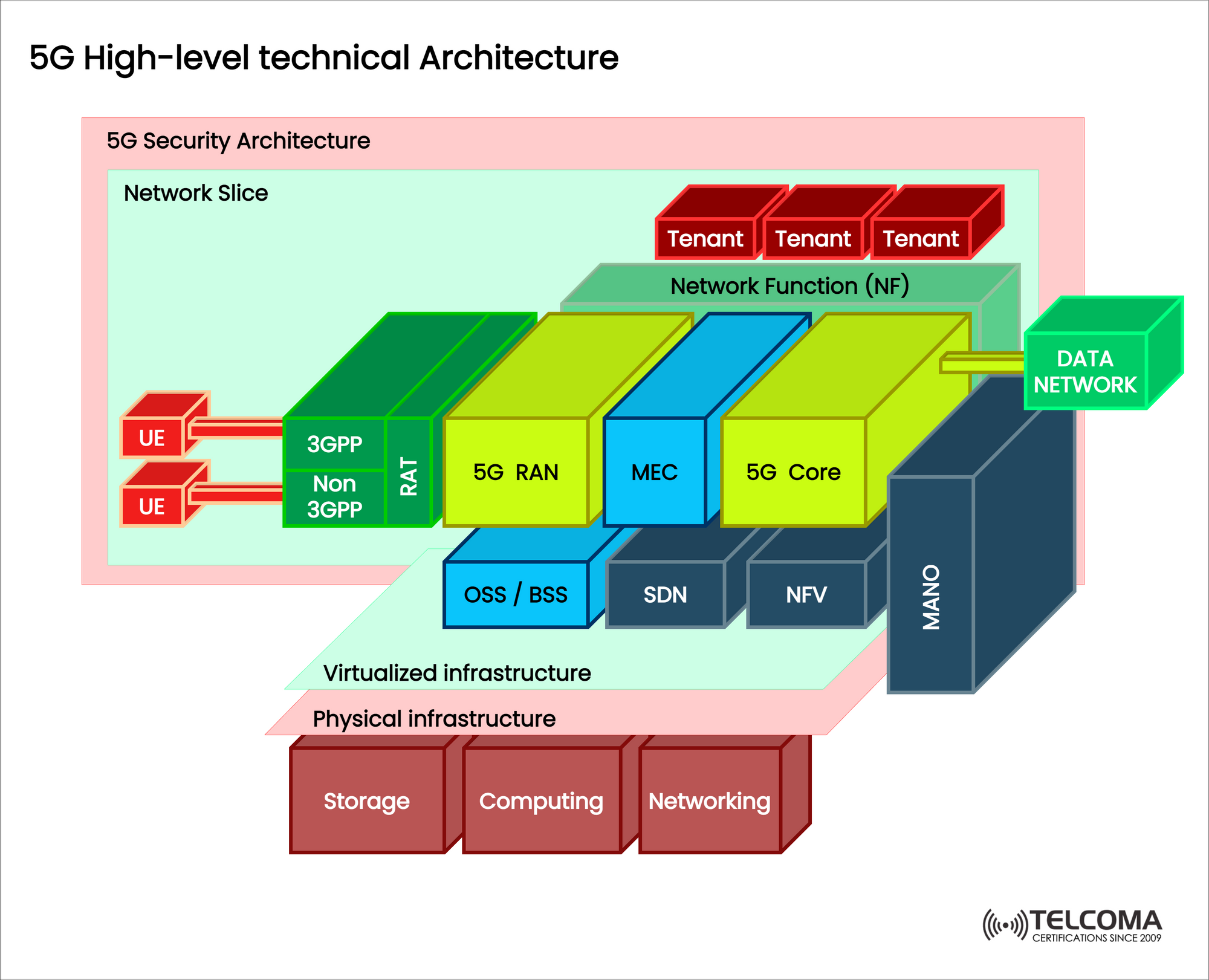5G Network Architecture - A High-Level Perspective




5G is the next generation of mobile networks that promises faster data rates, lower latency, and improved connectivity. To achieve these improvements, 5G introduces several new features and technologies in its network architecture. In this article, we will discuss the high-level perspective of 5G network architecture and the technical aspects of each component.
5G Network Architecture Overview:
The 5G network architecture can be divided into three main components:
User Equipment (UE):
User Equipment (UE) refers to the devices that are used by end-users to access the 5G network. Examples of UE include smartphones, tablets, laptops, and IoT devices. The UE is connected to the 5G network through a Radio Access Network (RAN).
Radio Access Network (RAN):
The Radio Access Network (RAN) is responsible for providing wireless connectivity between the UE and the core network. The RAN consists of two main components: Radio Access Technology (RAT) and Base Station (BS).
- Radio Access Technology (RAT):
Radio Access Technology (RAT) refers to the technology used by the RAN to connect the UE to the core network. There are two main RATs in 5G: New Radio (NR) and LTE.
- Base Station (BS):
The Base Station (BS) is responsible for transmitting and receiving wireless signals between the UE and the core network. The BS is connected to the core network through a backhaul link.
Core Network:
The Core Network is responsible for providing services and managing the overall operation of the 5G network. The Core Network is divided into three main components: Access Network (AN), Transport Network (TN), and Service Network (SN).
- Access Network (AN):
The Access Network (AN) is responsible for managing the RAN and providing connectivity to the UE. The AN consists of two main components: Central Unit (CU) and Distributed Unit (DU).
- Central Unit (CU):
The Central Unit (CU) is responsible for managing the overall operation of the AN, including controlling the DU and providing signaling and mobility management.
- Distributed Unit (DU):
The Distributed Unit (DU) is responsible for managing the RAN and providing connectivity to the UE. The DU is connected to the CU through a front haul link.
- Transport Network (TN):
The Transport Network (TN) is responsible for providing transport services between the AN and the SN. The TN consists of two main components: Optical Transport Network (OTN) and Packet Transport Network (PTN).
- Optical Transport Network (OTN):
The Optical Transport Network (OTN) is responsible for providing high-speed and reliable transport services for the AN. The OTN consists of optical fibers, optical amplifiers, and optical switches.
- Packet Transport Network (PTN):
The Packet Transport Network (PTN) is responsible for providing packet-based transport services for the AN. The PTN consists of routers and switches.
- Service Network (SN):
The Service Network (SN) is responsible for providing services to end-users. The SN consists of two main components: Service Control Function (SCF) and Application Function (AF).
- Service Control Function (SCF):
The Service Control Function (SCF) is responsible for controlling the services provided by the SN, including authentication, authorization, and accounting (AAA), policy management, and charging.
- Application Function (AF):
The Application Function (AF) is responsible for providing specific services to end-users, such as voice over IP (VoIP), video streaming, and gaming.
5G Network Architecture Technical Aspects:
Let's discuss the technical aspects of each component of the 5G network architecture in more detail.
User Equipment (UE):
The UE in 5G is designed to support multiple RATs, including NR and LTE. The UE also supports advanced features such as beamforming, which allows the UE to transmit and receive signals in a specific direction, and multiple antenna systems, which improve the overall signal quality and coverage.
Radio Access Network (RAN):
The RAN in 5G consists of two main components: Radio Access Technology (RAT) and Base Station (BS).
- Radio Access Technology (RAT):
The RAT in 5G is designed to support higher frequency bands than LTE, including millimeter-wave (mmWave) frequencies. The RAT also includes advanced features such as massive MIMO (Multiple Input Multiple Output) and beamforming, which improve the overall signal quality and coverage.
- Base Station (BS):
The BS in 5G is designed to support multiple RATs, including NR and LTE. The BS also includes advanced features such as beamforming, massive MIMO, and dynamic spectrum sharing, which allows the BS to dynamically allocate spectrum resources between NR and LTE.
Core Network:
The Core Network in 5G is divided into three main components: Access Network (AN), Transport Network (TN), and Service Network (SN).
- Access Network (AN):
The AN in 5G consists of two main components: Central Unit (CU) and Distributed Unit (DU).
- Central Unit (CU):
The CU in 5G is responsible for managing the overall operation of the AN, including controlling the DU and providing signaling and mobility management. The CU also includes advanced features such as network slicing, which allows the CU to create multiple virtual networks with different performance characteristics.
- Distributed Unit (DU):
The DU in 5G is responsible for managing the RAN and providing connectivity to the UE. The DU includes advanced features such as massive MIMO and beamforming, which improve the overall signal quality and coverage.
- Transport Network (TN):
The TN in 5G consists of two main components: Optical Transport Network (OTN) and Packet Transport Network (PTN).
- Optical Transport Network (OTN):
The OTN in 5G is designed to support higher speeds and lower latency than LTE. The OTN includes advanced features such as network slicing, which allows the OTN to create multiple virtual networks with different performance characteristics.
- Packet Transport Network (PTN):
The PTN in 5G is designed to support higher speeds and lower latency than LTE. The PTN includes advanced features such as network slicing, which allows the PTN to create multiple virtual networks with different performance characteristics.
- Service Network (SN):
The SN in 5G consists of two main components: Service Control Function (SCF) and Application Function (AF).
- Service Control Function (SCF):
The SCF in 5G includes advanced features such as network slicing, which allows the SCF to create multiple virtual networks with different performance characteristics. The SCF also includes advanced features such as policy management and charging, which allow the SCF to control the services provided by the SN.
- Application Function (AF):
The AF in 5G includes advanced features such as network slicing, which allows the AF to create multiple virtual networks with different performance characteristics. The AF also includes advanced features such as service orchestration, which allow the AF to control the services provided by the SN.
5G Network Architecture Advantages:
The 5G network architecture has several advantages over previous generations of mobile networks:
Higher Data Rates:
5G promises to provide higher data rates than previous generations of mobile networks, up to 10 Gbps or higher.
Lower Latency:
5G promises to provide lower latency than previous generations of mobile networks, as low as 1 ms.
Improved Connectivity:
5G promises to provide improved connectivity in dense urban areas, as well as in remote and rural areas.
Network Slicing:
5G introduces the concept of network slicing, which allows network operators to create multiple virtual networks with different performance characteristics on a single physical network infrastructure. This enables operators to offer customized services to different types of customers with varying requirements, such as high-speed internet access for consumers, low-latency connectivity for industrial IoT applications, and ultra-reliable communication for mission-critical applications.
Edge Computing:
5G enables edge computing, which involves moving computing resources closer to the end-users, thereby reducing the latency and improving the performance of applications. Edge computing is particularly useful for applications that require real-time processing, such as autonomous vehicles, augmented reality, and virtual reality.
Massive MIMO:
5G supports massive MIMO, which allows the base stations to communicate with multiple UEs simultaneously using a large number of antennas. This improves the overall signal quality and coverage, particularly in dense urban areas.
Beamforming:
5G supports beamforming, which allows the base stations to transmit and receive signals in a specific direction, thereby improving the overall signal quality and coverage.
Dynamic Spectrum Sharing:
5G supports dynamic spectrum sharing, which allows the network operators to dynamically allocate spectrum resources between NR and LTE based on the demand for each technology. This enables operators to efficiently utilize the available spectrum and improve the overall network performance.
Conclusion:
The 5G network architecture represents a significant evolution from previous generations of mobile networks, with a more distributed and flexible architecture designed to support a wide range of use cases and applications. The 5G network architecture includes advanced features such as network slicing, edge computing, massive MIMO, beamforming, and dynamic spectrum sharing, which enable network operators to provide customized services with higher data rates, lower latency, and improved connectivity. The success of 5G will depend on the deployment of a robust network infrastructure and the development of innovative applications that leverage the capabilities of the 5G network architecture.
